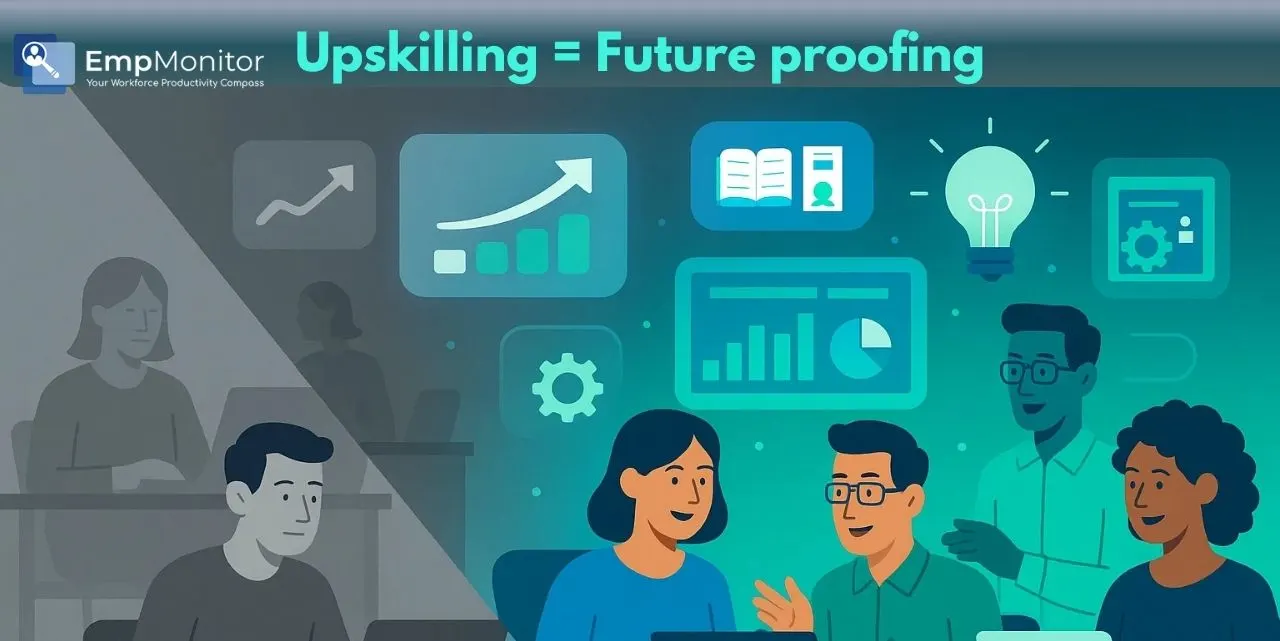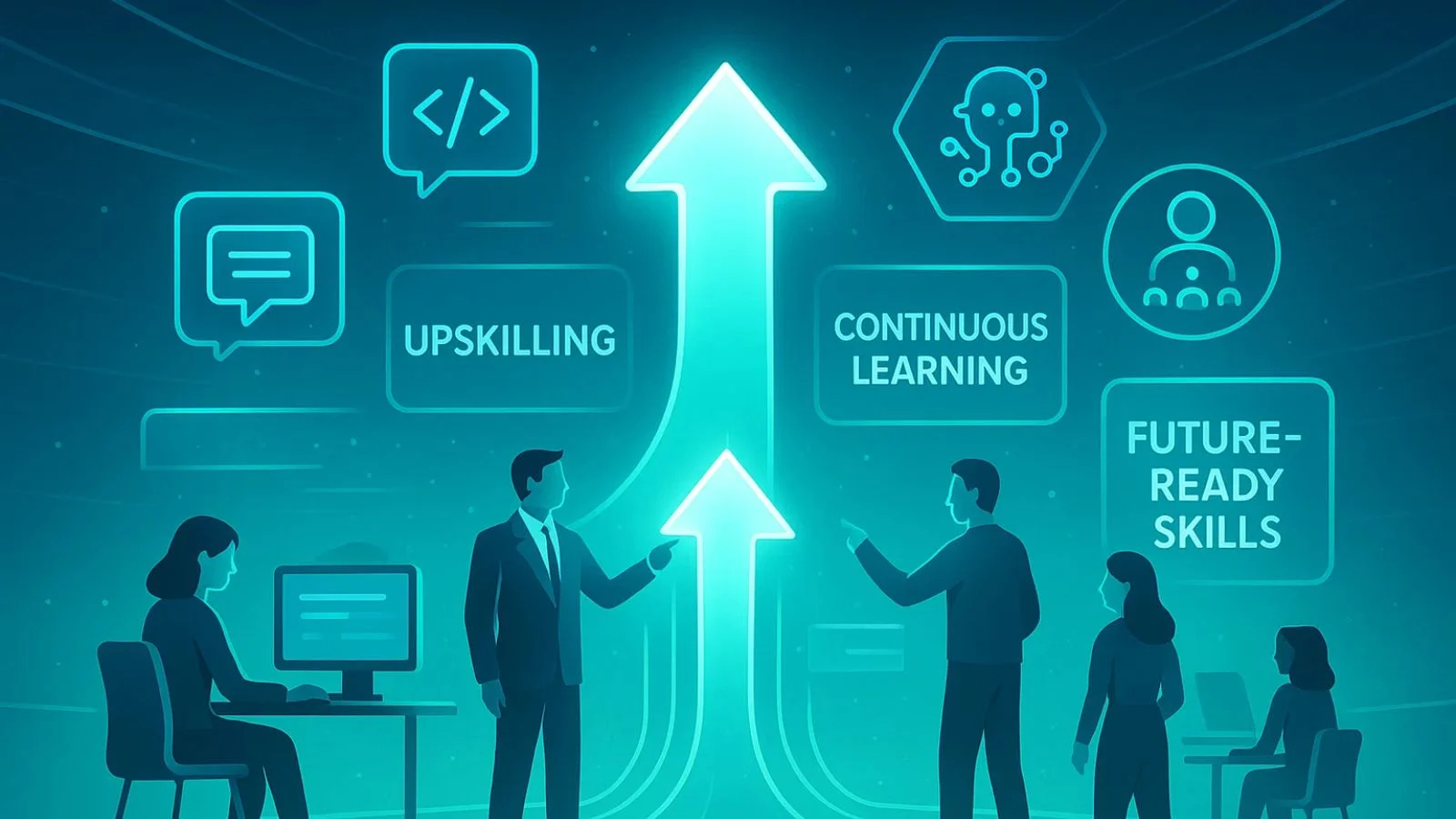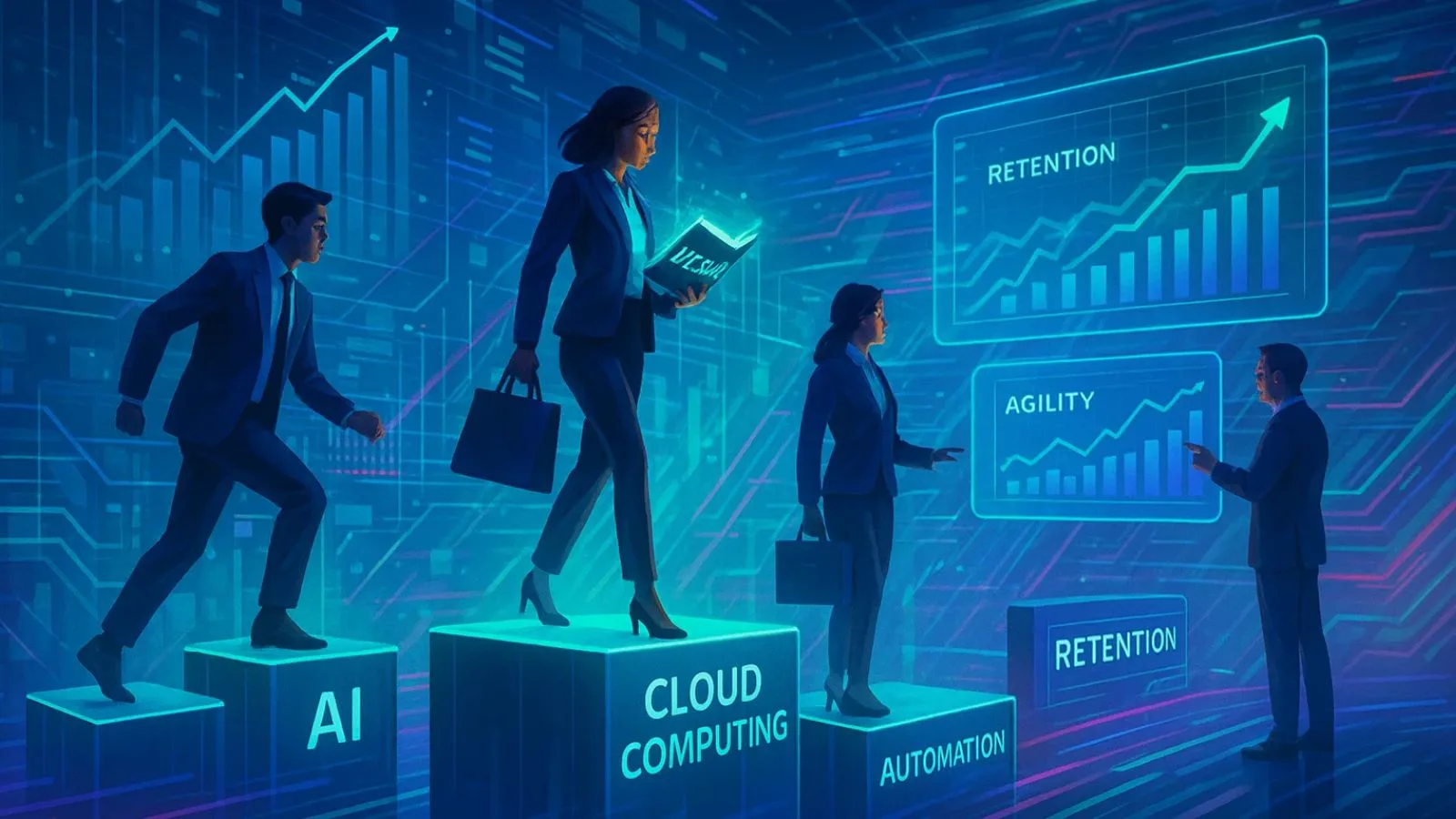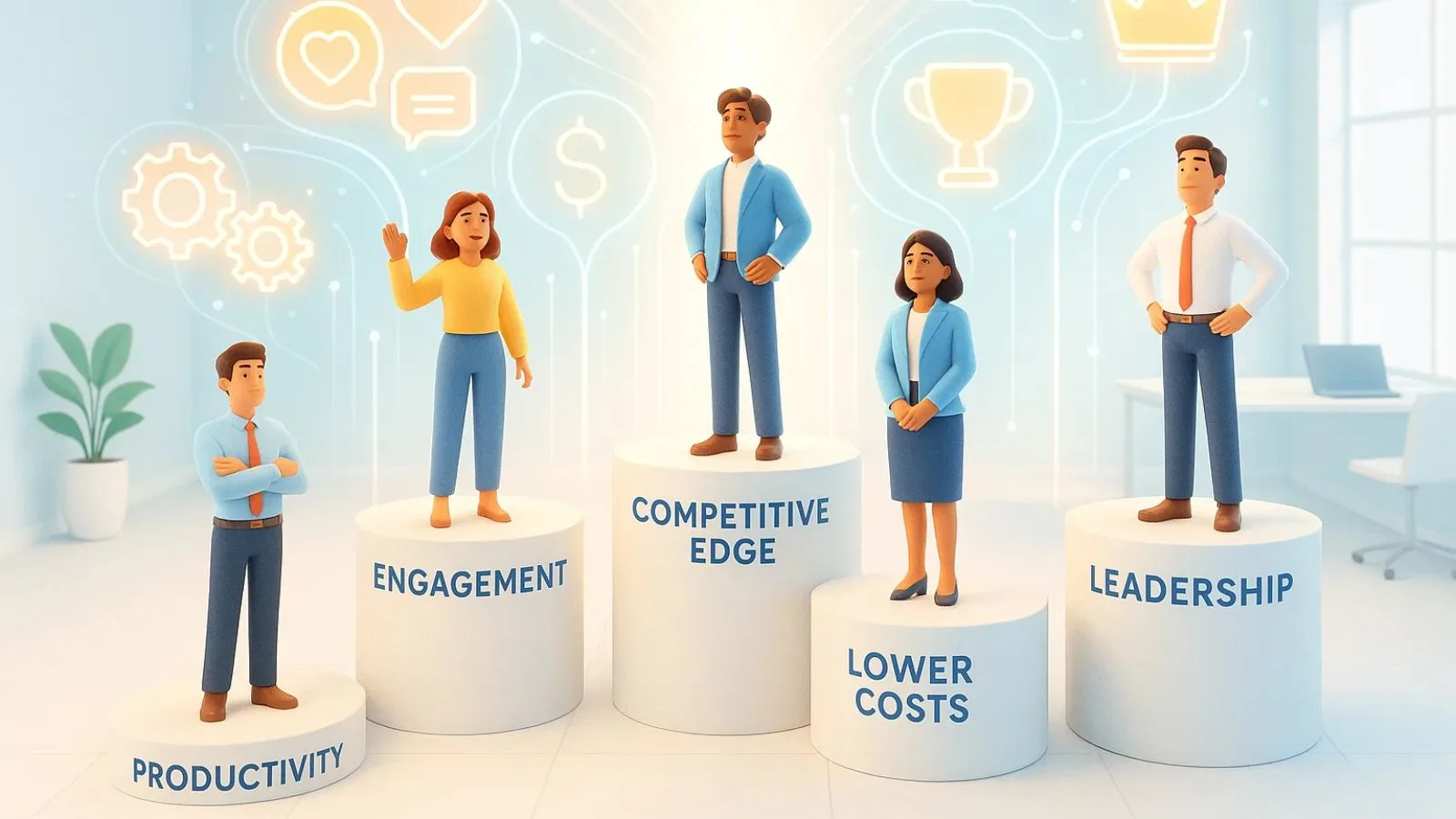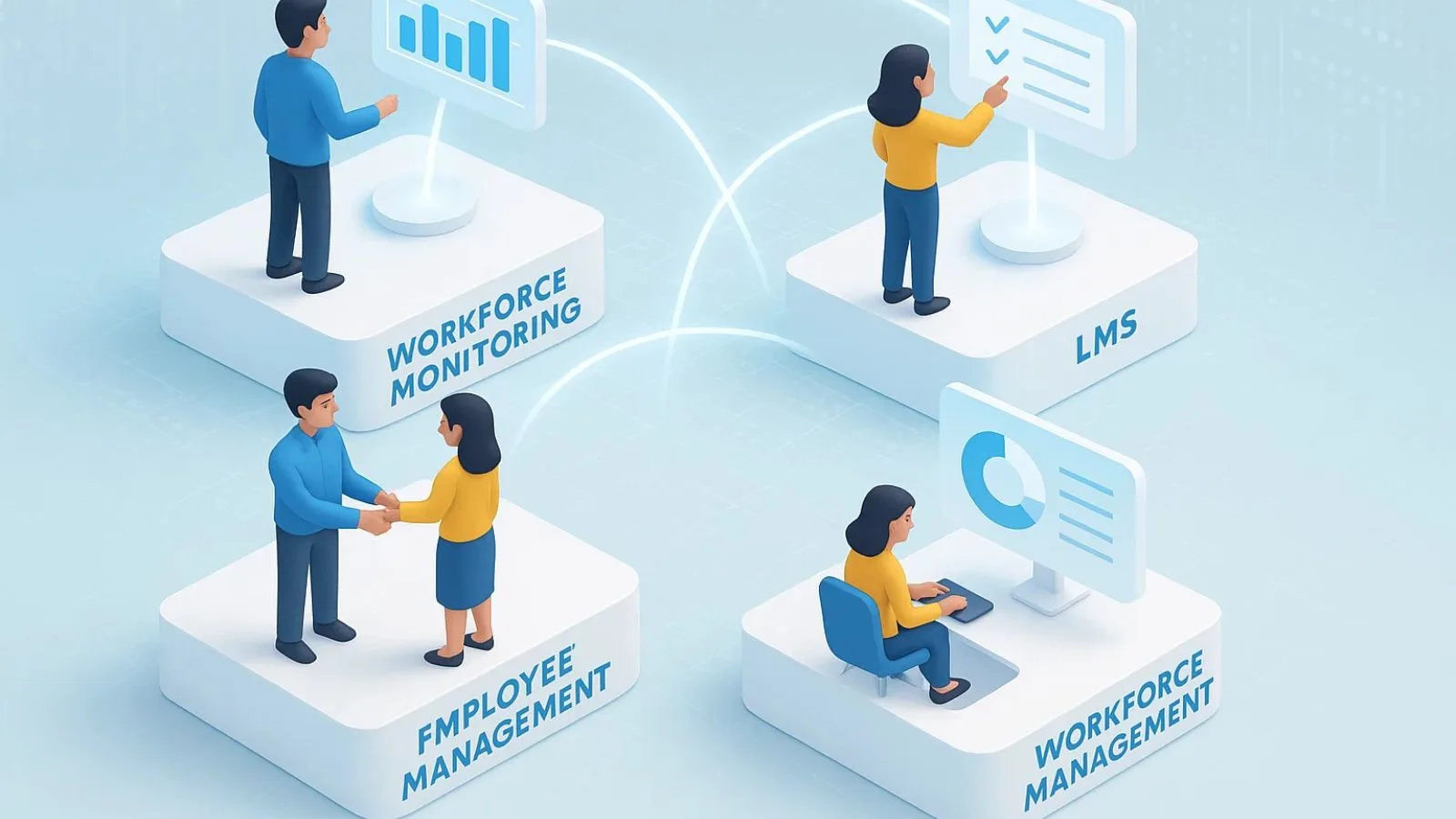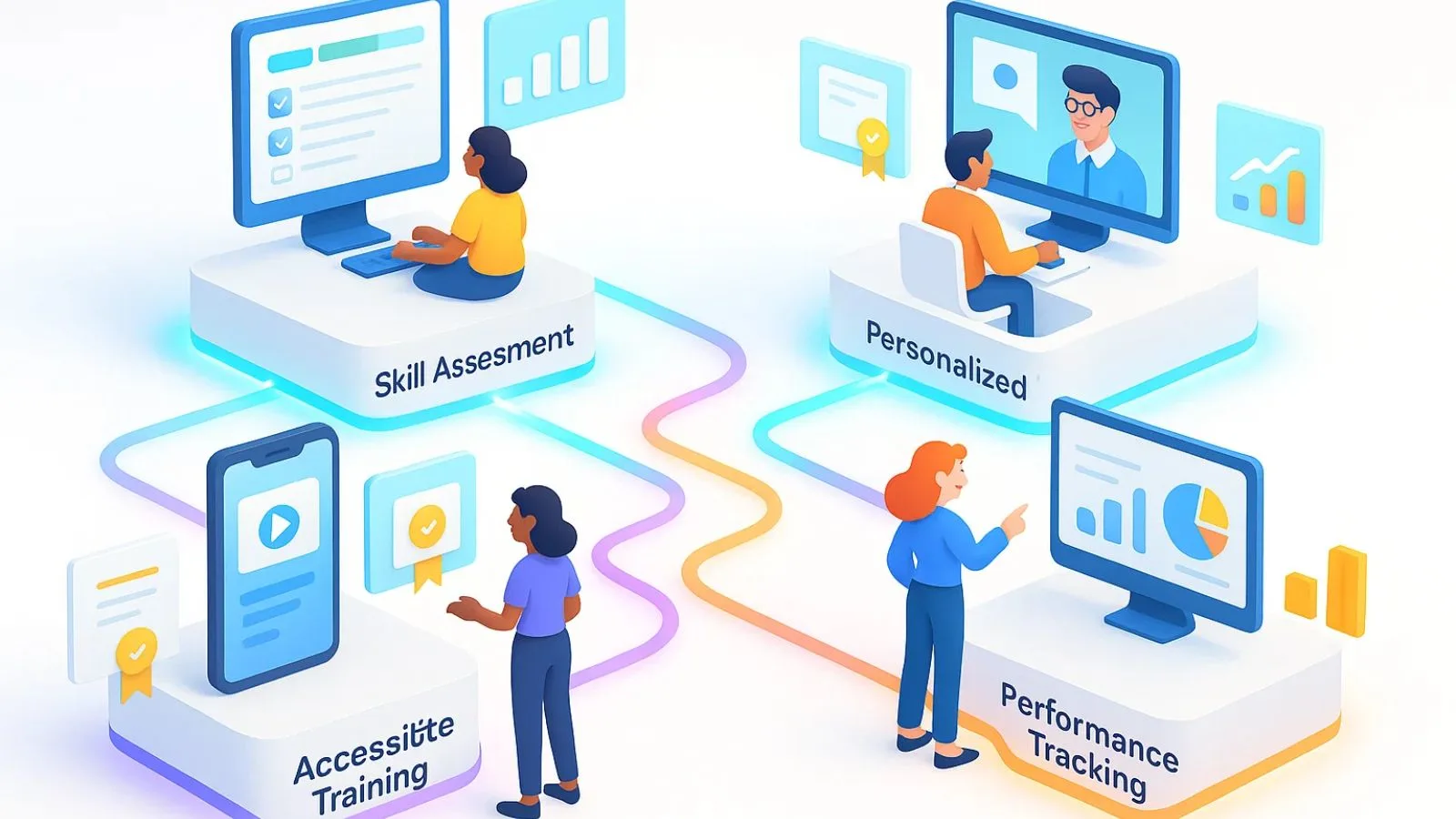Continuous learning and upskilling have become essential for staying ahead of the competition in a constantly evolving business landscape. Technological breakthroughs, shifting consumer demands, and global disruptions have made agility a top priority for businesses. One of the most powerful tools in a company’s arsenal to stay relevant and competitive is upskilling.
Once considered a bonus or optional benefit, upskilling has evolved into a strategic necessity. Companies that fail to support employee development risk falling behind in innovation, efficiency, and talent retention. But what exactly does upskilling entail, and why is it such a game-changer?
In this article, we’ll explore the full scope of upskilling, why it’s crucial in today’s climate, how it differs from reskilling, and how smart technology solutions like workforce monitoring software and employee management software can help organizations implement robust development programs.
You can Listen to the Blog here,
What Is Upskilling? Understanding the Concept
Before jumping into strategy, let’s answer the foundational question: what is upskilling?
Upskilling is the process of helping employees acquire new competencies or refine existing ones, allowing them to adapt to evolving job roles and future demands. Whether it’s training your sales team on a new CRM system, teaching cybersecurity basics to IT staff, or offering soft-skill development for managers, every initiative aimed at enhancing an employee’s capabilities falls under upskilling.
To clarify further, let’s break down the upskilling meaning in simple terms: it’s the proactive advancement of skills so employees can meet changing expectations in their current or closely related roles.
So, what does upskilling mean for an organization? It means more than just learning; it signifies transformation. Companies that embrace the upskilling definition gain a competitive edge by empowering their workforce to do more, adapt quickly, and contribute more strategically.
Moreover, understanding “what is upskilling” in a strategic context also means building a culture where continuous learning is not just encouraged, but expected. Employees are motivated when they see clear pathways to growth. For organizations, this translates to a more engaged and committed workforce ready to face new challenges.
Why Upskilling Matters in the Modern Era
The urgency for upskilling has never been more apparent. In just the past few years, we’ve seen entire industries reinvent themselves in response to digital disruption and economic turbulence. Upskilling is no longer just a way to stay ahead, it’s the only way to survive and thrive.
Here are some compelling reasons organizations must invest in upskilling:
1. Keeping Pace with Technological Advancements
Technology is transforming industries everywhere, from AI revolutionizing healthcare to automation streamlining manufacturing. Organizations that do not continuously evolve their workforce fall behind. Upskilling ensures employees stay proficient with the latest tools and platforms, keeping the business agile and digitally fluent.
Additionally, new platforms emerge every year: machine learning tools, cloud-based services, and blockchain systems. Each demands a level of expertise that didn’t exist just a few years ago. Workforce management software can help businesses stay organized and proactive in training employees to adopt these tools.
2. Bridging Critical Skill Gaps
Skill shortages are among the biggest obstacles facing modern businesses. Rather than searching externally for talent, which is often time-consuming and costly, organizations can develop those same skills internally. Upskilling empowers employees to meet new demands while boosting morale and job satisfaction.
For instance, if a company lacks data literacy, instead of hiring data analysts, they can upskill current team members using custom training programs. Not only is this approach cost-effective, but it also preserves company culture and knowledge.
3. Retaining Top Talent
Retention is a major challenge in today’s talent market. Professionals seek more than just a paycheck; they want career growth, learning, and purpose. Companies that offer ongoing learning opportunities are much more likely to keep their top talent. Upskilling communicates that the company is invested in employee growth and long-term success.
Plus, when learning is part of the culture, employees are more likely to stay loyal and stick around longer. Employees who feel they are growing with the company are more likely to stay through tough times and even advocate for the organization externally.
4. Improving Organizational Agility
Markets change quickly. Consumer behaviours shift. Regulations evolve. In this dynamic environment, organizational agility is key. Employees who are consistently upskilled can pivot faster, contribute across departments, and help businesses seize new opportunities.
Agility isn’t just about reacting, it’s about anticipating. With an upskilled workforce, companies can explore new business models, enter emerging markets, and respond proactively to challenges. This is where employee management software plays a vital role by helping leaders track readiness across teams.
Upskilling vs Reskilling: Know the Difference
Though people often mix them up, upskilling and reskilling each play a unique role in workforce development.
- Upskilling is about enhancing existing skill sets. Think of a graphic designer learning advanced UI/UX tools.
- Reskilling is training someone for a different role altogether, like a logistics worker learning to become a data analyst.
Both are vital in a digital economy. However, upskilling tends to be more sustainable for long-term talent development, allowing organizations to grow talent from within instead of replacing it.
Organizations must choose wisely between the two based on strategic objectives. For roles impacted by automation, reskilling may be essential. But to boost efficiency and innovation, upskilling offers a faster return and a more motivated workforce.
The Strategic Benefits of Upskilling
Investing in upskilling is not just an HR initiative; it’s a business strategy. The return on investment is both measurable and transformative.
Increased Productivity
Skilled employees are more confident and efficient. They solve problems faster, make fewer mistakes, and handle complex tasks more effectively. This leads to increased employee productivity across the organization.
With workforce monitoring software, companies can pinpoint the exact productivity improvements that result from specific training programs. This enables smarter allocation of training budgets.
Higher Employee Engagement
People naturally want to grow. When companies support this intrinsic desire through learning opportunities, employees feel recognized and motivated. Engaged employees bring more passion, creativity, and commitment to their roles.
They also tend to form stronger teams, drive innovation, and champion company values outcomes that directly support organizational growth and stability.
Lower Recruitment Costs
Hiring externally is not only expensive but also risky. New hires often need time to adjust and might not immediately fit into the company culture. Upskilling your existing workforce reduces these costs and improves cultural continuity.
This advantage is especially significant in fast-scaling businesses where speed and cultural alignment are critical.
Competitive Advantage
Companies that embed upskilling into their culture are seen as forward-thinking and employee-centric. This improves employer branding, attracting top-tier candidates and retaining the ones you already have.
As job seekers increasingly prioritize learning opportunities, this differentiation can make the difference in hiring top talent.
Stronger Leadership Pipelines
Developing internal talent equips you to promote from within. This fosters loyalty and ensures that leadership positions are filled by individuals who already understand your company’s values and operations.
Succession planning becomes seamless, and leadership transitions are smoother, critical for maintaining momentum during growth or restructuring.
Using Technology to Drive Upskilling at Scale
Upskilling can’t be implemented through intention alone; it requires structure, measurement, and scalability. That’s where technology steps in.
Workforce Monitoring Software
Tools like workforce monitoring software allow organizations to track real-time productivity, performance trends, and behavior analytics. This insight reveals where skill gaps exist and helps prioritize training efforts effectively.
These tools also provide visibility into remote and hybrid workforce efficiency, ensuring everyone receives targeted development regardless of location.
Learning Management Systems (LMS)
An LMS enables the distribution, tracking, and assessment of training programs. It supports various learning formats, video, webinars, quizzes, and self-paced modules, allowing for flexible, scalable education across teams. You can check different LMS pricing models to choose the right solution for your training strategy.
By integrating your LMS with workforce management software, you gain a holistic view of training outcomes and workforce readiness.
Employee Monitoring Software
Employee monitoring software brings visibility into employee goals, reviews, career paths, and learning journeys. Managers can track who’s progressing, who needs support, and how upskilling aligns with broader business objectives.
It also enables HR to manage certifications, automate learning milestones, and generate development reports with ease.
Workforce Management Software
With workforce management software, businesses can better forecast staffing needs, align schedules with skill levels, and ensure that trained employees are placed where they can deliver maximum impact.
This also supports better workload distribution, ensuring employees apply their new skills meaningfully in the business.
EmpMonitor: A Smart Partner for Data-Driven Upskilling
One standout tool in this space is EmpMonitor, a comprehensive solution that combines workforce monitoring and employee management functionalities to create a performance-aligned upskilling strategy.
With EmpMonitor, Organizations Can:
- Track employee activity and productivity trends
- Identify performance gaps and potential training needs
- Set custom training goals and monitor progress
- Encourage a culture of transparency and accountability
- Align learning outcomes with business KPIs
Try Now
EmpMonitor ensures that your upskilling initiatives are informed by real data, making every learning investment smarter and more impactful.
The platform also supports real-time alerts and customizable dashboards, making it easier for team leaders to intervene early and adjust learning plans proactively.
How to Successfully Implement an Upskilling Program
Rolling out a successful upskilling program requires more than just offering online courses. It must be strategic, employee-centric, and data-driven.
1. Conduct a Skills Gap Assessment
Begin by assessing where your organization stands today. Use technology to analyze existing competencies and compare them with future needs. This identifies areas for urgent development.
Workforce analytics can pinpoint underperforming departments, revealing where focused training could yield immediate improvements.
2. Align with Business Goals
Every learning initiative should support organizational objectives, whether it’s increasing market share, launching a new service, or adopting a new technology stack.
Tie every learning module to specific business KPIs and review quarterly progress to ensure alignment.
3. Personalize the Learning Journey
Not all employees learn the same way or need the same training. Use performance data to tailor learning paths. Combine mentoring, on-the-job learning, and digital courses to suit diverse styles.
Creating customizable learning plans also allows you to cater to different career aspirations; some may want to become specialists, others team leaders.
4. Make Learning Accessible
Offer learning that fits into daily workflows through microlearning, mobile apps, or integrated dashboards. Remove barriers like time or platform limitations.
Consider allocating “learning hours” each week and recognizing learners who hit development milestones.
5. Measure and Refine
Use dashboards and performance analytics to measure outcomes. Are employees applying new skills? Is productivity improving? Constantly evaluate and adapt your program based on these insights.
Celebrate wins to build momentum. Communicate ROI back to stakeholders to secure ongoing support.
Read More,
Top 12 Benefits of Employee Monitoring Software
Make Your Employees More Productive With Six Simple Tips!
Real-World Examples of Upskilling in Action
Some of the world’s leading companies are setting the standard by investing in upskilling at scale:
- Amazon has pledged over $700 million to upskill 100,000 employees, offering tech certification programs and internal mobility pathways.
- PwC created a “Digital Fitness” app that lets employees learn new digital skills at their own pace and track their progress.
- AT&T ran a huge training program to help its employees learn new tech skills and prepare for future jobs in the company.
Final Thoughts: Upskilling as a Strategic Imperative
Upskilling is no longer a future initiative; it’s an urgent present-day mandate. Companies that encourage continuous learning are better at coming up with new ideas, keeping their employees, and staying flexible in a changing world. With intelligent tools like EmpMonitor and a clear, goal-aligned learning strategy, any organization, regardless of size can empower its workforce to succeed.
The workforce of the future will not be the strongest or the most experienced. It will be the most adaptable, the most prepared to evolve, and the most relentlessly curious.
And that’s what upskilling delivers.
FAQs on Organizational Upskilling
Q1. What is upskilling in the workplace?
Upskilling means helping employees learn new or improved skills so they can do their current jobs better or take on future roles.
Q2. Why is upskilling important for modern organizations?
It closes skill gaps, improves engagement, enhances productivity, and builds internal mobility key for sustainable growth.
Q3. How can companies implement effective upskilling strategies?
Start with a skills audit, align with goals, personalize learning, and use tools like EmpMonitor to measure progress.
Q4. What’s the difference between upskilling and reskilling?
Upskilling builds on the skills someone already has, while reskilling helps them learn completely new skills for a different role
Q5. How does workforce monitoring software support upskilling?
It provides insights into employee performance, identifies skill gaps, and tracks the effectiveness of training initiatives.

